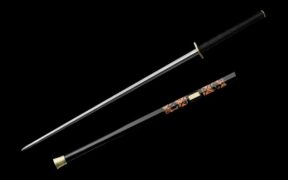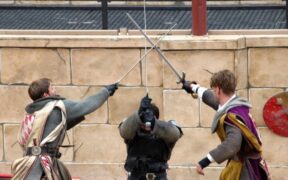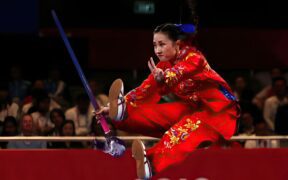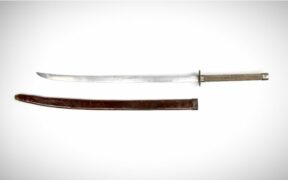Our content features commercial links to our products, committed to transparent, unbiased, and informed editorial recommendations. Learn More
World Jianshu League: The Modern Jian Fencing Sword Sport
NO AI USED This Article has been written and edited by our team with no help of the AI
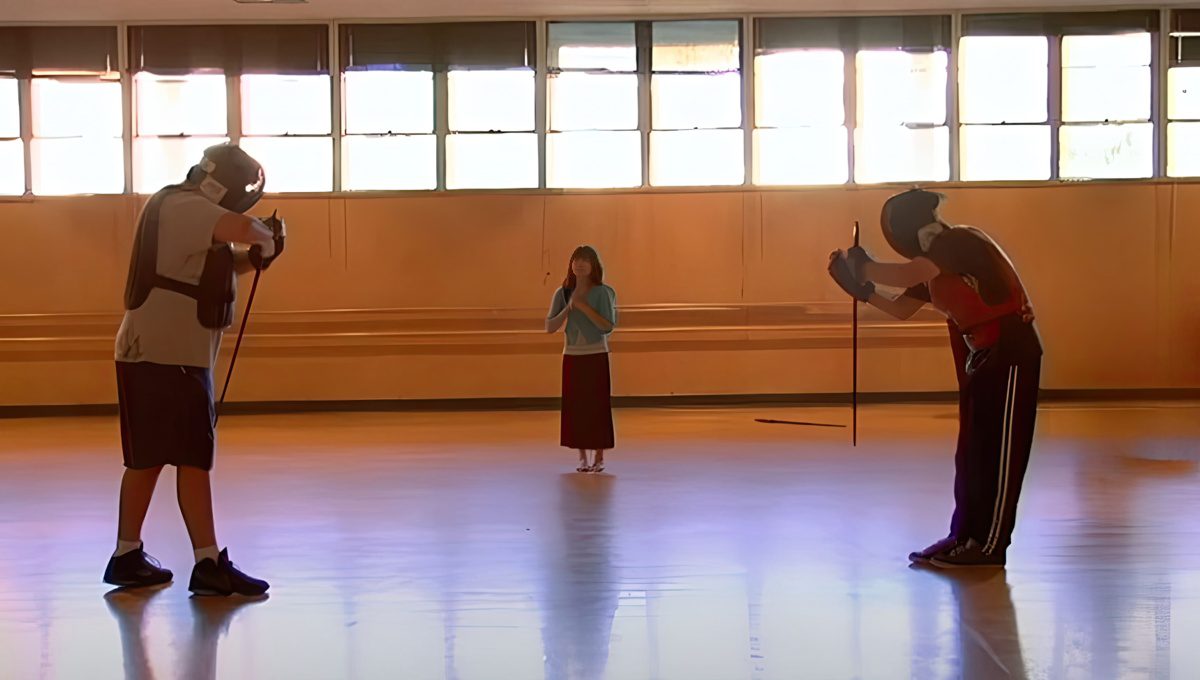
Chinese swords were frequently used in large-scale battles combined with many formations and great warriors. To become one of the best warriors and swordfighters in Chinese history, one would have to train and master the straight Jian sword, which could take years.
The World Jianshu League, or WJL, is a modern place where the strongest Jian swordfighters could face each other in a one-on-one duel and determine the best of them all. In this article, we will go over the entirety of WLC, including the sword in use, its rules, and its history and goals.
What is the World Jianshu League?
The World Jianshu League, meaning swordsmanship in Chinese, is dedicated to preserving the traditional art and technique of the first Chinese sword, the Jian, and has established specific rules for tournament-based competition.
In this context, judges, competitors, and spectators discuss and document the many Jian combat methods. Fighting between contestants with very similar rules to European sword fencing or Japanese Kendo is possible. Some Chinese sword dancers can perform stunning motions with their Jian blades for entertainment purposes which are scored based on certain rules.
This league is slowly gaining popularity amongst the various Chinese martial arts schools in the United States. It has a clear objective: to preserve and enrich the almost forgotten historical Jian sword culture and tradition. They do this by creating a new form of Chinese sword sport similar to other common sword-fighting schools, such as HEMA (historical European martial arts).
The Jian Sword
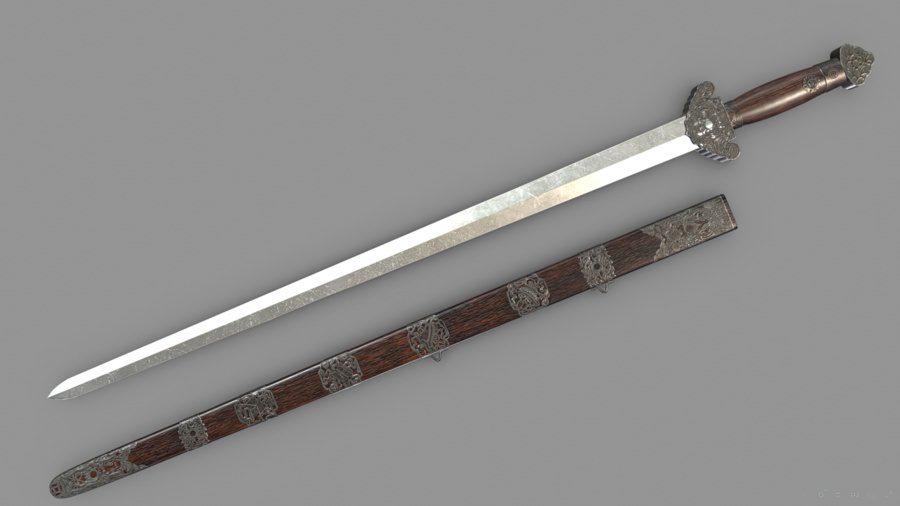
A Jian straight sword is one of the first bladed-edged weapons in the arsenal of swords in Chinese history. It is a direct descendant of the Chinese dagger and one of the first weapons of Chinese Wushu or Kung Fu martial arts. It has a straight blade with double edges, meaning sharpened on both sides, used for slashing and thrusting attacks.
Due to their shorter length and size, often between 27 to 35 inches (70 and 90 cm) long, Jians designed for sparring and training in the Jianshu League are typically one-handed weapons. Sword length in the Jianshu league is measured with the user holding the Jian in the rear reverse position and outside of their arms with the blade pointing up and reaching the eyes.
Rules for the Jianshu League
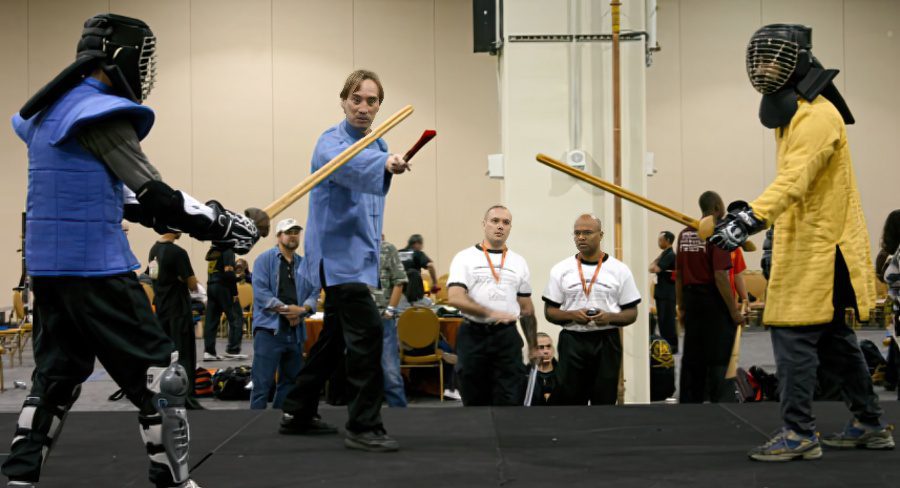
The Jianshu League organizes several championships with strict guidelines that all competitors must adhere to. When following and sticking close to the ruleset, a winner will be selected following a combat fight that is mostly one-on-one, with the potential for a gold medal to be awarded. Here are a couple of the most important rule sets.
Attack Techniques
Certain techniques must be followed when striking to gain a point in the Jianshu fights and league. They are linked to Chinese martial arts produced in the past for dueling using the Jian. However, some combatants may introduce their own style of strikes. These are the most commonly used attacks.
- Thrusting with the tip of the blade
- Quick pecking attacks
- Slashing and cutting with the ending part of the blade length (last 15 inches (38 cm)) in linear and circling motion
These techniques need to be done with a force behind them so that the judge spectating can consider them a valid hit and give a point to the attacker. Some attacks done to critical target areas can render and score a victory for the attacker as well.
Target Area
The target area is where Jian attacks are allowed and counted as valid points, and striking where it is illegal will do the direct opposite. Generally, there are two types of validity for these targets.
Primary, major, and critical area
- Head – Front and side
- Neck – Front and side
- Torso
Secondary, minor, and effective area
- Limbs – feet, legs, hands, arms
All other areas that will be struck on the person’s body or gear would be considered “off-target” and won’t score any points that might lead to victory. If both players hit each other simultaneously with their swords in valid target areas, they will each get a point.
Certain disqualifications can be called if there is a strike in an illegal area, like the groin, back of the head and neck, or improper usage of the sword for bashing with its guard or pommel.
Equipment
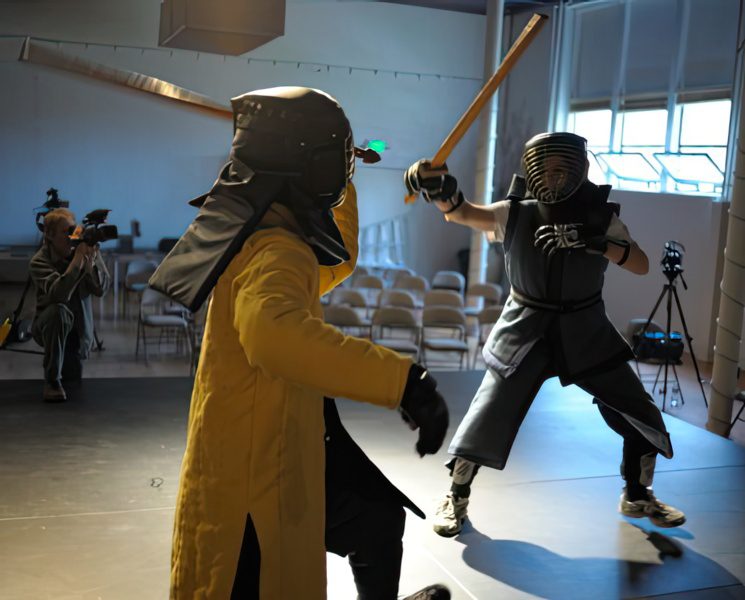
Although Jianshu is based on certain Chinese sword martial arts found in various historical scripts and manuals, its core and foundation today is safety. This means that the tournament judges must take care of and carefully inspect the proper equipment.
Sword – Combat sport Jian blade
- Must be made out of unsharpened steel or polymer
- Maximum blade length – 30 inches (76 cm)
- Maximum sword weight – 3.3 lbs (1.5 kg)
- The Jian is to be taped with different colors to help it be identified
Gear
- Fencing mask
- Chest gear set
- Padded gloves
- Durable pants
- Groin cup protector
Like any other sword sport and martial art, despite the use of protective gear and utmost care for each player, there are certain injuries that one can experience. If an injury occurs during combat at any time, the judge and referee have the final word and can stop a duel or fight.
Match Regulations
The Jianshu league duels have certain types of people leading the duels and the scoring system, as well as a designated area where the battle may take place. Commonly they are separated into three groups.
- Court – the battle arena where the rules and regulations take place. The court is a square, 30 feet long on each side, and the fighters start in separate corners with a 5-foot distance from the center
- Director or Judge – the judge oversees the fight and makes all final decisions based on scoring points and victory or defeat by raising their hand
- Referee – there are usually four referees in each corner, observing the fight and assisting the judges
These groups are all part of controlling the flow of the battle and helping determine a winner based on the previously set rules. The director or judge has 1.5 weight points for a certain decision, while the four referees have one weight point each. They discuss their thoughts about certain strikes throughout the match and score in for the final summary.
- Start of match – The judge starts the match.
- End of match – The timer and judge might end the match.
- Halting the match – Calling out of bounds, fouls as off-target hits, injuries, and non-sportsmanship behavior.
- Calling a point – Determining what kind of point should be given based on the hit.
The person and Jian fighter who will get the most points at the end of the fight will be proclaimed the winner.
History of the World Jianshu League
Chinese swordsmanship, or Jianshu with the Jian combat, dates back at least 2,500 years. However, the rise of Chinese swordmaking and steel during the Han Dynasty suggests that rule-based Jian bouts were at their peak at that time. As a result, more and more soldiers began using the Dao single-edged saber in battle, while the Jian was relegated to martial arts, sport fencing, and the upper classes.
Jianshu schools and their associated leagues first appeared in the United States in the late 20th century. Wushu martial arts, popular in Chinese pop culture, are often associated with Jianshu despite widespread criticism that they have little to do with traditional Chinese swordsmanship due to their flaccid swords and unconventional sword usage.
Despite not being a very popular sword fighting sport like Western Olympic fencing, various tournaments still take place that teaches the Chinese art of swordplay in traditional forms like the Northern Shaolin. Other examples include 18 classical weapons, taijiquan and praying mantis, Chi Gung, and Tai Chi Ch’uan of the Yang and Chen families.
